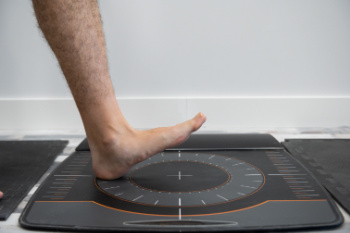
The biomechanics of the foot and ankle are important for efficient movement, stability, and shock absorption. During walking, the foot moves through a cycle that begins with heel strike, where the heel contacts the ground, absorbing impact and distributing force through the arch. As the foot rolls forward, it enters midstance, a phase where the entire foot bears weight, allowing for balance and stability. In the final push-off phase, the toes lift off, propelling the body forward. The ankle joint, connecting the foot to the leg, allows up and down movement, while the subtalar joint below enables side to side motion. Ligaments and tendons provide structural support, and the arch acts as a spring, storing energy with each step. Proper biomechanics ensure efficient movement, protect joints from excess stress, and reduce injury risk, maintaining foot health over time. It is suggested that you visit a podiatrist to have a foot and ankle examination and gait analysis to ensure you have proper biomechanics enabling optimum comfort and mobility.
If you have any concerns about your feet, contact Jeffrey Rosenblatt, DPM from New York. Our doctor can provide the care you need to keep you pain-free and on your feet.
Biomechanics in Podiatry
Podiatric biomechanics is a particular sector of specialty podiatry with licensed practitioners who are trained to diagnose and treat conditions affecting the foot, ankle and lower leg. Biomechanics deals with the forces that act against the body, causing an interference with the biological structures. It focuses on the movement of the ankle, the foot and the forces that interact with them.
A History of Biomechanics
- Biomechanics dates back to the BC era in Egypt where evidence of professional foot care has been recorded.
- In 1974, biomechanics gained a higher profile from the studies of Merton Root, who claimed that by changing or controlling the forces between the ankle and the foot, corrections or conditions could be implemented to gain strength and coordination in the area.
Modern technological improvements are based on past theories and therapeutic processes that provide a better understanding of podiatric concepts for biomechanics. Computers can provide accurate information about the forces and patterns of the feet and lower legs.
Understanding biomechanics of the feet can help improve and eliminate pain, stopping further stress to the foot.
If you have any questions please feel free to contact our office located in Brooklyn, NY . We offer the newest diagnostic and treatment technologies for all your foot and ankle needs.
